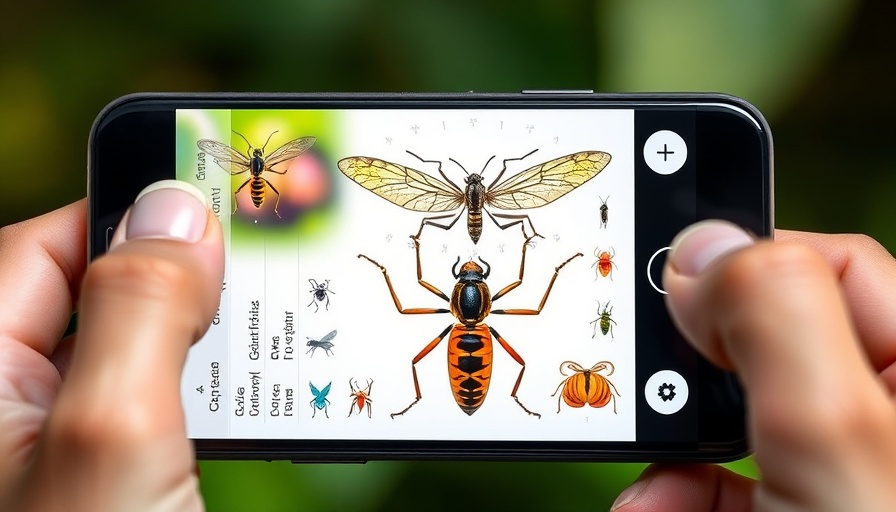
Welcome to InsectNet: Your New Farming Ally
Imagine standing in your garden, puzzled by an insect scuttling across a leaf. Is it a pollinator helping your plants thrive or a pest threatening your crops? Enter InsectNet, a groundbreaking web-based application that’s set to change the way farmers and hobbyists alike identify insects. With just a photo snapped from your smartphone or computer, InsectNet employs cutting-edge machine learning technology to provide real-time identification and insights.
How It Works: A Glimpse into the Technology
InsectNet is supported by an impressive dataset of 12 million insect images, collated from both scientific sources and citizen scientists. This application not only identifies over 2,500 insect species but guarantees more than 96 percent accuracy. If the app isn’t confident about an insect, it lets the user know, fostering trust in the information provided. This transparency is crucial for users, especially farmers who rely on accurate information for their pest management strategies.
Tailored for Every Region and Farmer's Needs
One of InsectNet’s remarkable features is its ability to adapt to specific local and regional datasets. For instance, in Iowa, about 50 insect species hold significant importance to local agriculture—InsectNet can precisely focus on these through a fine-tuned model utilizing around 500,000 insect images. Farmers from various regions around the world can benefit, even in areas with limited data availability, tapping into the global dataset to identify potential threats or allies in their gardens.
The Broader Impact on Agriculture and Sustainability
As climate change redefines ecosystems and pest populations shift, tools like InsectNet are more important than ever. The app can guide sustainable farming practices by helping growers identify beneficial insects, like pollinators, and effectively manage harmful pests without resorting to excessive pesticide use. This plays a vital role in promoting environmental health and directly impacts food sustainability.
Why Knowledge is Power
The ability to identify insects instantly goes beyond mere curiosity; it empowers farmers. Understanding which insects are present can inform management choices—whether to protect a beneficial species or to take action against a potential pest threat. This knowledge, enriched by sophisticated AI technology, enables farmers to adapt to changing conditions and threats in their agricultural environments.
Looking Ahead: The Future of InsectNet
The developers behind InsectNet envision it as a complementary tool within the growing suite of AI technologies aimed at tackling agricultural challenges. As more users engage with the app and contribute their observations, the dataset will continue to evolve, enhancing accuracy and usability over time.
In a world where technology increasingly intersects with farming practices, embracing tools like InsectNet could be a game-changer—helping farmers identify the insects buzzing around their farms while contributing to global agricultural sustainability. This innovative solution not only fosters an environment of efficiency and knowledge but also aligns with the broader goal of caring for our planet.
 Add Row
Add Row  Add
Add 




Write A Comment